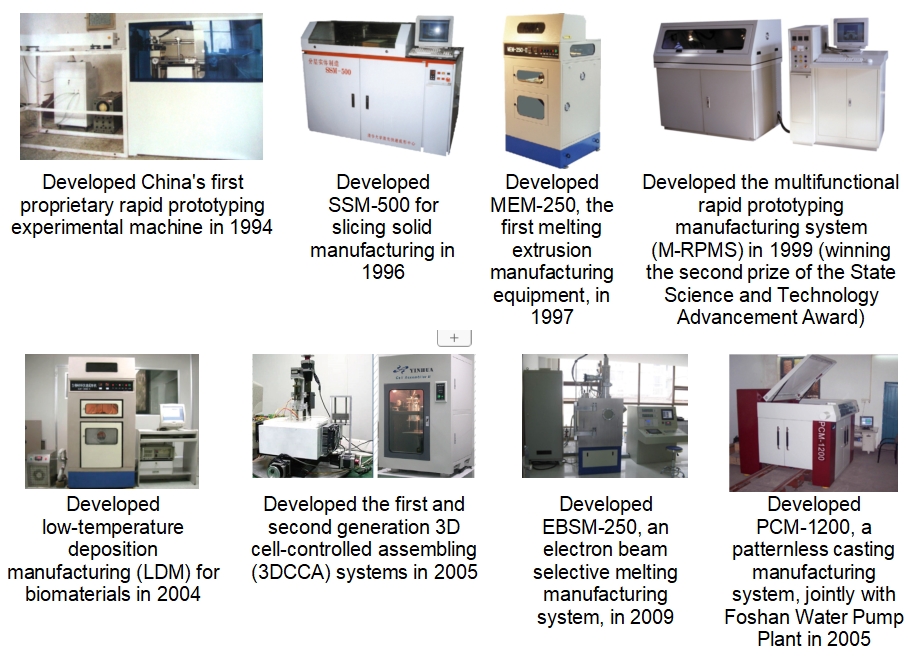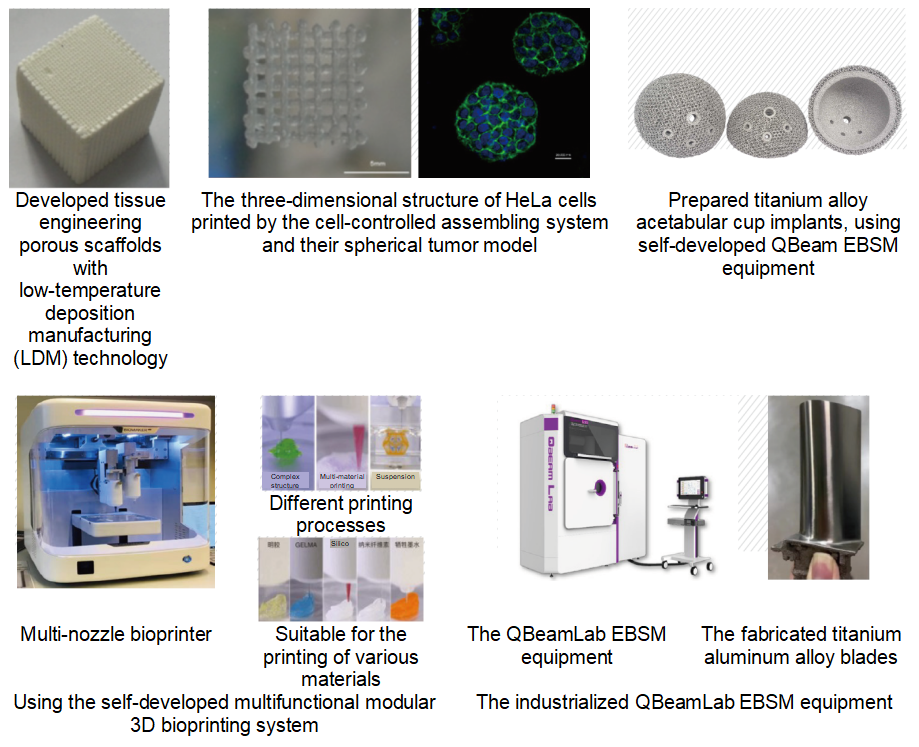Introduction to the Laboratory
Beijing Key Laboratory of Biofabrication and Rapid Prototyping Technology grew out of the Institute of Biofabrication Engineering and the Rapid Prototyping Center of the Department of Mechanical Engineering at Tsinghua University, and was recognized as a key laboratory by the Beijing Municipal Science and Technology Commission in May 2013. The laboratory is aimed at developing into a scientific research, education, and talent training base in Beijing and radiating the world, capable of exerting international influences in the fields of biofabrication and rapid prototyping. It focuses on exploring and developing innovative applications of advanced manufacturing technology and science in biomedical engineering, in order to promote and lead the development of emerging disciplines in biofabrication. The laboratory runs in the charge of the director under the guidance of the Academic Committee. Professor Sun Wei serves as the director of the laboratory, Professor Lin Feng is the executive deputy director, and Academician Zhang Xingdong of Sichuan University serves as the director of the Academic Committee of the laboratory.
The laboratory has been exploring and developing rapid prototyping technology (now known as "additive manufacturing" or "three-dimensional printing") since the early 1990s, delivering such achievements as slicing solid manufacturing (SSM), melting extrusion manufacturing (MEM), patternless casting manufacturing (PCM), freezing ice confectioning (FIC), and multifunctional rapid prototyping manufacturing system (M-RPMS). It has won the first prize of Beijing Science and Technology Progress Award and the second prize of the State Science and Technology Advancement Award. After 2000, it commenced the research on rapid prototyping technology for metal materials, biological materials and cells, and has developed many technologies and machines of additive manufacturing and 3D bioprinting, such as electron beam selective melting manufacturing (EBSM), low-temperature deposition manufacturing (LDM) and 3D cell-controlled assembling (3DCCA).
The laboratory always stands in the forefront of the global academic community with its cutting-edge researches and gains high reputations both at home and abroad. It has held the first to fourth sessions of the National Conference on Rapid Prototyping (in 1995, 2000, 2004 and 2006), the first to third sessions of the International Conference on Rapid Prototyping (in 1998, 2002 and 2008), the first and second sessions of China Biofabrication Conference (2002 and 2010) and the first to fifth sessions of the International Conference on Biofabrication (in 2005, 2008, 2011, 2014 and 2018), and organized the 2017 International Conference on Biofabrication.
Laboratory Talent Teams
The laboratory currently consists of 32 full-time members, including 26 with associate professor-level and above technical titles, plus 20-plus postdoctoral fellows, and 30-40 engineers, laboratory technicians, and doctoral and master's students. It has developed a multi-disciplinary team good at multi-level collaboration and innovation.
Research Directions of the Laboratory
The laboratory undertakes basic research, technological innovation and technology transfer, focusing on additive manufacturing (three-dimensional printing) of biomaterials, cells and engineering materials, to meet the needs for the forming of complex structures and difficult-to-machine materials in biological, medical and mechanical manufacturing. Including:
Three-dimensional printing of tissue engineering scaffolds:The laboratory has been developing the technology of making bioactive artificial bone (tissue engineering scaffolds) since 1999, and has been supported by the National Natural Science Foundation of China and the 863 Program. It has developed a unique low-temperature deposition manufacturing (LDM) technology, and prepared scaffolds for bulk bone repair with a graded porous structure, high porosity, and high strength, which were proved in animal experiments to be quite effective in repairing defects of large bones.
3D cell-controlled assembling: It launched the research on three-dimensional controlled assembly of cells in 2002, and proposed a composite cross-linking step-by-step process based on cell-hydrogel solution. It is the first in the world to have formed a large three-dimensional structure of liver cells with an open hierarchical structure, so that cells can survive for several months just by normal culturing. It then developed various three-dimensional cell structures, such as endothelial cells, adipose stem cells, trophoblasts, and cancer cells.
Single-cell jetting and precise three-dimensional cell printing technology:Since 2012, funded by the National Natural Science Foundation of China, it has developed single-cell jetting technology based on alternating hysteretic force. Based on this technology, cell printing comes to a single-cell scale in terms of accuracy, and is thus capable of three-dimensional printing of multicellular complex structures, providing more three-dimensional cell models and construction methods for researches on cell biology, diseases, and drugs.
Electron beam selective melting:Since 2004, funded by the National Natural Science Foundation of China, the laboratory has been leading the research on electron beam selective melting (EBSM) in China, delivering many EBSM devices to users. With the support from Beijing Science and Technology Program, it has developed EBSM-250, a new-generation system capable of dual metal additive manufacturing, in the field of personalized manufacturing of titanium alloy implants and integrated research on the preparation/forming of difficult-to-machine materials.
In addition to the above researches, the laboratory also attaches great importance to the exploration of new research frontiers, including the design and construction of encoded biological models, the manufacturing of cellular machinery and cell-bots, the reconstruction of highly bionic in vitro biological functional structures and their application in physiological/ pathological/ pharmacological models, the 3D printing and 3D structure forming of cells, organs and advanced medical biomaterials, the design, manufacturing and application in new drug research of high-throughput cell chips, micro-organ chips and tumor chips, as well as the integration of micro/nano biofabrication technology and space 3D bioprinting.
Scientific Research Results of the Laboratory






